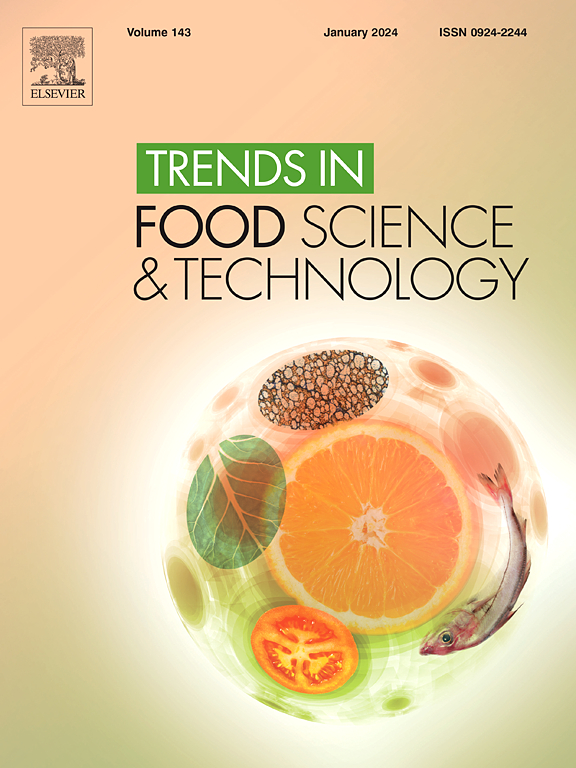Jaboticaba berry: Metabolic benefits, bioactive compounds, and opportunities for commercialization
IF 15.1
1区 农林科学
Q1 FOOD SCIENCE & TECHNOLOGY
引用次数: 0
Abstract
Background
Brazil biodiversity offers opportunities to explore the nutritional and functional properties of native fruits like jaboticaba (Plinia jaboticaba). This fruit is rich in phenolic compounds, dietary fiber, vitamins, and minerals and holds promise for food enrichment, product development, and health research.
Scope and approach
This review explores jaboticaba's botanical characteristics, production, nutrient composition, bioactive compounds, and health and commercial potential. It focuses on studies from 2014 to 2024 investigating the metabolic effects of jaboticaba's whole fruit, peel, and peel-and-seed fractions in animals and humans.
Key findings and conclusions
Jaboticaba, particularly its peel, is abundant in anthocyanins (e.g., cyanidin-3-O-glucoside), proanthocyanidins, ellagitannins, and dietary fiber. These bioactive compounds are highly concentrated in the peel, making it the most studied fraction. While the whole fruit shows promise, the peel and peel-and-seed fractions have demonstrated notable health benefits, including improvements in adiposity, glucose metabolism, insulin sensitivity, lipid metabolism, intestinal health, inflammatory markers, antioxidant activity, and weight management. Further research, particularly long-term clinical studies, is needed to fully understand jaboticaba's health-promoting potential and support its incorporation into functional foods and therapeutic applications.

求助全文
约1分钟内获得全文
求助全文
来源期刊

Trends in Food Science & Technology
工程技术-食品科技
CiteScore
32.50
自引率
2.60%
发文量
322
审稿时长
37 days
期刊介绍:
Trends in Food Science & Technology is a prestigious international journal that specializes in peer-reviewed articles covering the latest advancements in technology, food science, and human nutrition. It serves as a bridge between specialized primary journals and general trade magazines, providing readable and scientifically rigorous reviews and commentaries on current research developments and their potential applications in the food industry.
Unlike traditional journals, Trends in Food Science & Technology does not publish original research papers. Instead, it focuses on critical and comprehensive reviews to offer valuable insights for professionals in the field. By bringing together cutting-edge research and industry applications, this journal plays a vital role in disseminating knowledge and facilitating advancements in the food science and technology sector.
 求助内容:
求助内容: 应助结果提醒方式:
应助结果提醒方式:


